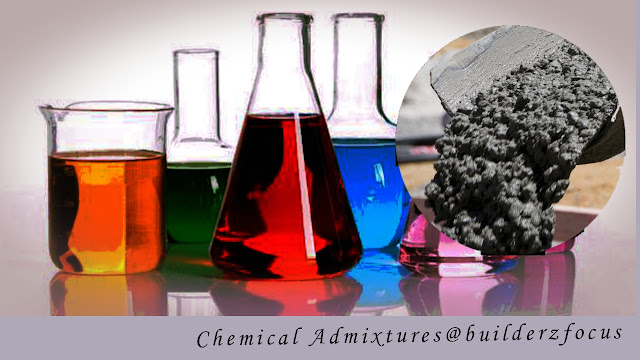CHEMICAL ADMIXTURES IN CONCRETE
CHEMICAL ADMIXTURES IN CONCRETE
A material
other than water, aggregates, or cement that is used as an ingredient of
concrete or mortar to control setting and early hardening, workability, or to
provide additional cementing properties.
Mostly of people are having some contradiction on considering
additives as admixtures although both alter some properties, but they are put
on different substances since additives are put during cement production while
admixtures are put during concrete mixing.
Reasons for using admixtures
- To suitable concrete of certain properties for complex structures.
- For economic purposes
- For maintaining quality of concrete during all stages of concrete work
Admixtures can be divided into two categories as
follows
- Mineral admixtures
- Chemical admixtures
In this post will talk more about chemical
admixtures as used in modifying properties of fresh and hardened concrete.
Chemical
admixtures these are water soluble compounds that are added to concrete during
mixing for altering concrete properties such as setting time, workability,
mostly they are added in concrete in small desirable quantity to a make full
chemical process per requirement.
The following are the examples of chemical
admixtures, their processes, effects on mixed concrete.
Air entraining admixtures
These
admixtures when added to the concrete mix, they tend to entrap air (microscopic
bubbles) into a concrete, entrapped air allow expansion and contraction of
concrete, so it increases durability of concrete exposed to freezing and
thawing.
The
entrapped air as surfactants tends alter the surface tensions properties
between particles in mix this affects the workability and cohesion between
particles that reduce tendency of bleeding and segregation.
Also
the entrapped air bubbles acts as bearings to reduce friction between particles
that allow compaction in low workable concrete (semi solid concrete).
Water reducers (Plasticizers)
These
admixtures tends to reduce amount of water requirement in archiving certain
slump of concrete, this means with the reduced amount of water the recommended
workability is attained.
Typical
water reducers reduce water requirement to about 5 percent to 12 percent.
For
example,
If
the design requirement is 180 liters, if we are going to use water reducer of
10 percent the water required will be.
10%
x 180 = 18 liters
Now water required will
be
180 – 18 =
172 liters
This
reduction of water requirement is reduction in water cement ratio, with the
reduction of water cement ratio (water requirement) and workability high
strength concrete is attained.
The
recommended amount of water reducer has to be applied, because more water
reducers cause more workable concrete that produces weak concrete.
Retarder admixtures
These are admixtures that delay setting and
hydration process of the concrete, they are useful in extending setting time of
concrete, but they are also used in attempt decrease slump loss and extend
workability especially prior to placement at elevated temperatures.
Accelerators
These are admixtures which increases the rate of
hydration of hydraulic cement, due to this the setting time of cement is
reduced, this causes early hardening and strength development of cement concrete,
mortar or grout.
Accelerators can be either that reduce the time for
the mix to change from the plastic to the hardened state (setting time) or that
develop early strength of about 120%,130% in 24hrs,48hrs respectively.




Comments
Post a Comment